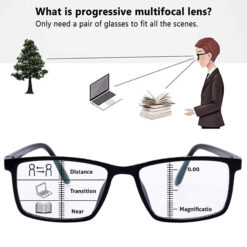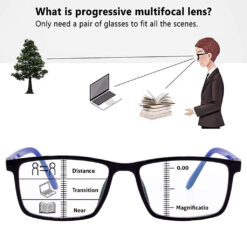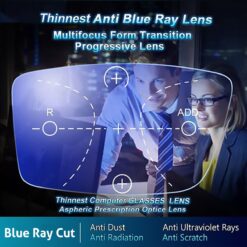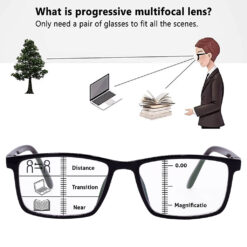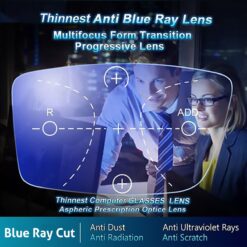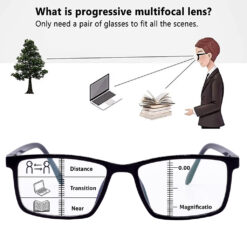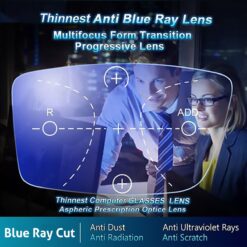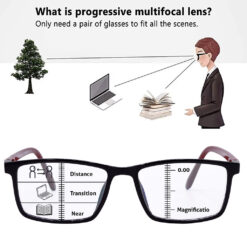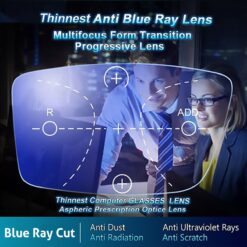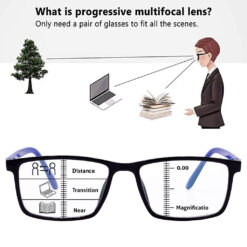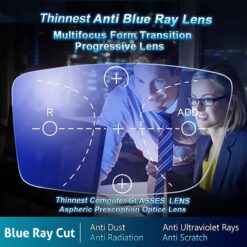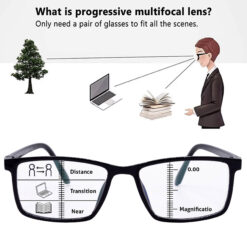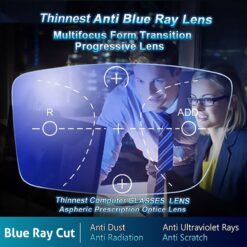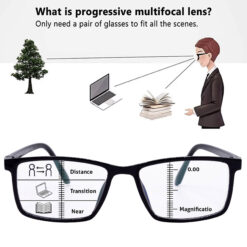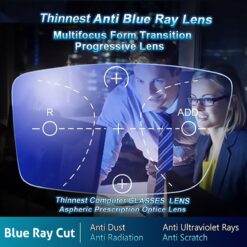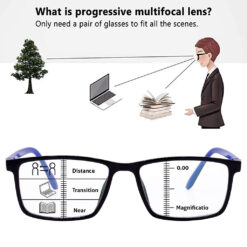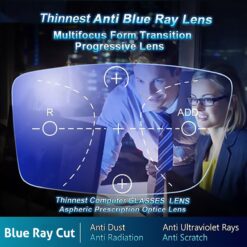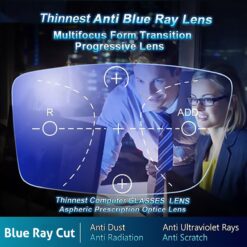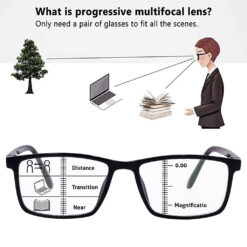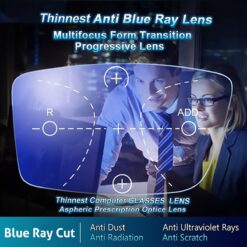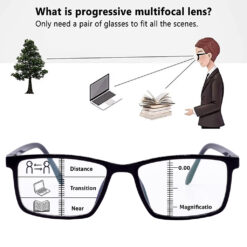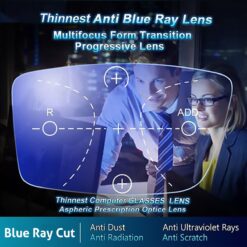Progressive Reading Glasses
Progressive Reading Glasses
Progressive Reading Glasses
Progressive Reading Glasses
Progressive Reading Glasses
Progressive Reading Glasses
Progressive Reading Glasses
Progressive Reading Glasses
Progressive Reading Glasses
Progressive Reading Glasses
Progressive Reading Glasses
Progressive Reading Glasses
Progressive Reading Glasses
Progressive Reading Glasses
Progressive Reading Glasses
Buy Blue Ray Cut Reading Glasses Online
Looking for Blue Ray Cut Reading Glasses that actually feel good to wear, help during long screen hours, and don’t look odd in daily use? Here’s what most people miss: comfort and clarity matter as much as the coating, and not every “blue filter” lens performs the same way in real life. This category page breaks down exactly what to look for, who benefits most, and how to choose reading powers and frames that suit daily habits. You’ll also find clear answers to common questions people ask before buying, and practical tips based on what eye-care experts and recent studies say about blue light filtering and digital eye strain.
Why Blue Ray Cut Reading Glasses are popular with readers and screen users
Blue Ray Cut Reading Glasses combine magnification for close work with coatings that filter parts of the blue-violet spectrum associated with digital eye strain, glare, and late-evening screen use, which is why they’re a go-to for people juggling e-books, phones, and laptops all day. The idea is simple: reduce harsh light, sharpen near text, and keep reflections under control, so reading feels easier and eyes don’t tire as fast during longer sessions. Some users also notice fewer headaches and a smoother shift from bright screens to dim rooms, though results vary and depend on coating quality and overall ergonomics like screen distance and ambient lighting. If the day involves switching between printed pages and devices, the right reader power paired with a quality blue light filter can make that transition more comfortable and predictable across tasks.
What blue light filtering actually means
Blue light filtering lenses use coatings or materials designed to selectively reduce high-energy visible (HEV) blue wavelengths that screens and LEDs emit, which are commonly linked to discomfort for sensitive users during extended viewing. Many lenses target a band roughly spanning 380–500nm, with particular focus on the 415–455nm region that is often discussed in relation to digital fatigue and potential sleep disruption when exposed late at night. While clear lenses can still incorporate selective filters, stronger filtering often shows a subtle yellow or amber tint that users may notice slightly when viewing white backgrounds on-screen. The goal isn’t to block all blue light but to reduce the intensity that reaches the eyes, ideally without distorting colors in a way that affects everyday reading and app use.
The key wavelength range to know
When lens makers talk about blue light filtering, they often cite the region from about 400–450nm or 415–455nm as the focus for comfort-oriented filters, balancing reduction with color fidelity so text stays crisp and images don’t skew too warm. If a lens claims to filter blue light but only affects violet light higher than 415nm, the real-world impact on screen blue output can be limited, which is why independent spectral data is more trustworthy than quick “pen” checks. For most users, a moderate filter with a solid anti-reflective stack is enough for daily reading and mixed device work without making screens look unusual or overly warm.
Benefits people expect vs what research shows
Shoppers usually look for three outcomes: less eye strain, fewer headaches, and better sleep after late scrolling, and there’s some expert commentary and consumer guidance that supports possible comfort gains for sensitive users during long screen sessions. At the same time, high-quality systematic reviews have found little to no short-term advantage for eye strain reduction compared to non-filter lenses, and sleep-related outcomes remain mixed across studies. In practice, this means expectations should be realistic: the right lens can feel nicer to use, but it’s not a medical treatment and effects vary; basics like screen ergonomics and break habits still matter most for comfort.
Potential comfort benefits during long screen sessions
Some buyers report reduced glare, gentler contrast, and fewer subjective symptoms like dryness or burning during sustained reading, especially under bright LED lighting or glossy screens, which aligns with several consumer-facing resources and eye-care discussions. A well-chosen anti-reflective coating paired with selective blue light filtering can make prolonged near work feel more manageable by cutting surface reflections that otherwise cause squinting and micro-strain. The experience is often most noticeable for those already sensitive to light or switching between bright apps and darker rooms, where glare control and filtered peaks can improve overall comfort, even if clinical endpoints don’t always show large differences.
What recent reviews say about eye strain and sleep
A 2023 Cochrane review concluded blue‑light filtering lenses may not reduce short‑term computer-related eyestrain versus standard lenses, and effects on sleep were inconclusive due to mixed results across varied populations. That doesn’t rule out individual comfort benefits, but it does suggest that buyers should combine lenses with good habits like the 20‑20‑20 rule and evening screen limits for the best chance at better sleep and fewer symptoms. Think of the filter as one tool in a small toolkit, not a cure-all—smart usage patterns still carry most of the weight.
Blue Ray Cut Reading Glasses vs anti‑glare: what’s different
Anti‑glare (anti‑reflective) coatings reduce reflections from lens surfaces, improving clarity and reducing distracting halos, which helps a lot during text-heavy reading and under overhead lighting. Blue Ray Cut Reading Glasses add selective filtering aimed at the blue band from screens, which may help some users with perceived comfort late in the day or under intense LED sources. If glare is the main issue, AR alone can make a strong difference; if late-night use or sensitivity to cool-white backlights is a pattern, a validated blue filter may feel better over longer stretches.
When anti‑glare alone is enough
If reading happens mostly in well-lit settings with matte screens and screen time ends well before bed, a high-quality AR coating on readers can deliver most of the comfort benefits people notice day to day. AR improves contrast and cuts edge flares around letters, which makes small fonts easier to parse without constantly refocusing, and that alone can ease subjective strain even without a blue light filter. Start with AR if color neutrality and the “clearest” possible view are priorities or if previous tinted lenses felt too warm for document or design tasks.
When a blue filter adds value
If evening reading on phones and tablets is routine, or if bright LED office lighting triggers squinting and mild headaches, a selective blue filter stacked with AR can take the edge off the glare profile while preserving enough color accuracy for normal use. Users who toggle between video, e-readers, and spreadsheets might appreciate the slight softening of harsh whites and cooler tones without losing crispness in text-heavy layouts. The key is verification: look for lenses with documented filtering in the 415–455nm band rather than relying on quick at‑home tricks that don’t reflect true spectral performance.
Picking the right reading power for screens and books
Reading glasses magnify near objects, usually optimized for around 35–45cm for books and phones, while computer work often sits farther away at 50–70cm, which changes the ideal power slightly for comfort. For mixed use, many people prefer a power that balances both distances, or they keep a dedicated pair for screens at a slightly lower power than their book readers to reduce over‑accommodation at the monitor range. If text feels sharp up close but fuzzy at the laptop, or if leaning forward becomes a habit, that’s a sign to reconsider power for the intermediate distance common with desktops and larger laptops.
Near, intermediate, and multi‑task use
-
Near (books/phones at 35–45cm): standard reading power is fine for most, delivering crisp text and comfortable posture for casual sessions.
-
Intermediate (screens at 50–70cm): consider a step lower than near readers to avoid feeling “too strong” at the monitor position and to reduce the urge to hunch forward.
-
Multi‑task: some users keep two pairs or choose lenses labeled for computer use that target that mid-range distance with or without blue filtering, depending on sensitivity.
Signs you may need a different power
If eyes feel tired after short sessions, if there’s frequent refocusing when switching tabs, or if white backgrounds feel harsh even with AR, it’s time to reassess distance and power needs for the main reading tasks. Another clue is frequent screen zooming just to make text readable—that usually points to either insufficient magnification or the monitor being placed farther than what the current power supports comfortably. A quick check with an optometrist can help dial in a power that suits the most common working distance used daily.
Lens coatings that make a visible difference
The coating stack often determines day‑to‑day comfort more than any single feature, with anti‑reflective layers being the foundation for sharper, higher-contrast reading on bright interfaces. Hydrophobic and oleophobic layers help keep smudges and moisture from softening text clarity, so wiping is faster and the lens stays clearer during long sessions. UV protection is a nice add for outdoor transitions, though it’s a separate property from blue filtering and should be verified rather than assumed from marketing language.
Anti‑reflective, hydrophobic, UV—what to prioritize
Start with a proven AR, then add hydrophobic for low-maintenance clarity, and ensure UV protection is explicitly included where relevant to usage patterns. If evenings are screen-heavy, add a selective blue filter that doesn’t over-tint and still maintains natural whites for documents and e-books. This balanced stack covers most scenarios without making screens look unusual or requiring frequent cleaning interruptions.
Clear vs tinted blue filters
Clear blue filters aim for subtle spectral cuts with minimal color shift, while amber-tinted variants block more of the blue band and are often preferred by users highly sensitive to glare at night. For daytime reading and work presentations, many prefer clear or very light tints to keep charts and document colors familiar, especially when proofreading or color-checking. If sleep is the priority and late-night reading is non-negotiable, a stronger tint can feel calmer on the eyes, at the expense of warmer whites and a slight change in color perception.
Frame styles for long wear
Lightweight, flexible frames with soft nose pads reduce pressure points during extended reading, especially when switching between a phone and a larger screen repeatedly across the day. Wider lenses help keep the reading zone accessible even when posture shifts, so there’s no constant chin-up maneuver to find the “sweet spot,” which can otherwise lead to neck strain. For couch reading or bed use, low-bridge fit and grippy temple tips help prevent slipping and frequent adjustments, keeping focus on the page instead of the frame.
Lightweight materials and nose‑bridge comfort
Thin acetate or TR90 frames are popular for readers because they blend durability with low weight, and adjustable nose pads help fine-tune fit to reduce red marks and slippage during long sessions. If lenses are on the larger side, look for spring hinges to handle off-and-on cycles without feeling loose after a few weeks of use. The right fit keeps the optical center aligned with the eyes so text stays uniformly sharp across the lens area.
Fit tips for fewer slip adjustments
-
Aim for temples that sit straight without pinching behind the ears, so micro-slips don’t happen every time the head tilts.
-
Choose a bridge style that matches nose shape; small changes here have a big effect on comfort and stability.
-
If the frame creeps downward when looking at a laptop, consider slightly tighter temple tips or a lighter frame to reduce front weight.
How to check if a blue filter is legit
The most reliable verification is a spectral test showing how much light the lens transmits or blocks across the blue region, rather than quick “pen light” demos that don’t map to the real screen spectrum. Reputable sellers or optometrists can share a transmission curve or at least confirm targeted wavelengths, so expectations match what the lens actually does at the key peaks. If a product makes bold claims without documentation, it’s better to opt for a version with clear, testable specs and a sensible return window.
What a spectral report reveals
A spectral report shows the percentage of light transmitted at specific wavelengths, which lets buyers see whether a lens meaningfully reduces the 415–455nm band associated with digital glare and late-night sensitivity. This transparency also helps set realistic expectations around color shift and tint, since heavier filtering often means a warmer view of white screens. The report becomes a practical way to compare lenses beyond marketing terms like “blue cut” or “computer ready,” which differ widely in practice.
Why “pen tests” can mislead
Pen or “violet laser” tricks often target wavelengths that don’t reflect what screens actually emit, so passing that test doesn’t guarantee useful blue filtering for devices. The test can make weak filters look stronger than they are, which is why a proper spectrum or third-party verification is much more trustworthy for daily screen use decisions. When in doubt, ask for data or buy from sellers who publish it clearly.
Price ranges and value picks
Blue Ray Cut Reading Glasses come in a range of prices largely driven by lens quality, coating stack, frame material, and whether prescription customization is included. Non-prescription readers with a solid AR and selective blue filter sit at the value end, while premium options add better scratch resistance, hydrophobic layers, and lighter materials for all-day comfort. If reading extends late into the evening or eye sensitivity is high, investing in a stronger, well-documented filter with robust AR can be worth it over time.
What typically changes as price goes up
Higher tiers often bring clearer AR performance (less residual tint), tougher scratch coats, better hydrophobic behavior that keeps lenses clean longer, and reliable, documented filtering in the target band. Frames also improve in fit and durability with spring hinges, flexible materials, and refined nose-bridge geometry that reduces marks during extended reading. Premium builds tend to hold alignment better, so optical centers stay consistent and text clarity doesn’t drift with daily wear.
When to invest in premium coatings
If hours on screens stack up daily—especially under bright LEDs or during travel—premium AR plus a proven filter can reduce micro-distractions like ghost reflections and flare that chip away at comfort. Those sensitive to light spikes in cool-white environments often appreciate the calmer look of the screen that higher-grade stacks bring, which helps sustain focus across longer reading tasks. For occasional use, a well-made AR reader with moderate filtering is usually enough to feel a positive difference versus bare lenses.
Care and usage habits that matter more than marketing
Even the best lenses won’t fix poor ergonomics, so place screens at eye level, keep a comfortable 50–70cm distance for monitors, and follow the 20‑20‑20 rule to reset focus regularly. Avoid blasting brightness; tune displays to room lighting to reduce harsh contrast that triggers squinting and increased blink suppression, which can otherwise worsen dryness. At night, limiting screens before bed helps sleep more than any lens alone, though selective filtering may help some users feel less wired while winding down.
20‑20‑20 rule, lighting, and screen settings
Every 20 minutes, look at something 20 feet away for 20 seconds to relax focus and reduce perceived strain, and keep ambient lighting soft and even to avoid bright-hotspots behind or above the display. If white backgrounds feel piercing, try dark mode or reduce contrast slightly so letters stay sharp without the glare halo that aggressive brightness can create on glossy screens. This simple combo often delivers the biggest comfort gain per minute invested, with or without a blue filter.
Night routines and sleep hygiene
If late-night reading is necessary, dim screens and consider warmer color temperature in the evenings, which complements what a filter provides and reduces overstimulation, especially close to bedtime. Cutting notifications after a set hour also helps the mind shift gears, since alertness is influenced by content and timing as much as light spectrum. Think of lenses, settings, and habits as a trio; together they make the biggest difference to sleep and morning freshness.
Who benefits most from Blue Ray Cut Reading Glasses
People who read on phones or e-readers for long blocks, work in front of laptops daily, or feel sensitive to cool-white LEDs often report a smoother experience with selective filtering plus AR on their readers. Those who switch between spreadsheets, coding windows, and PDFs may especially like the calmer edges and lower glare profile, which helps maintain focus during detail-oriented tasks. If late-night scrolling happens despite best intentions, a validated filter can complement warmer display settings to keep evenings more comfortable on the eyes.
Readers, coders, designers, binge‑watchers
Text-heavy users and media watchers both benefit when reflections drop and harsh peaks are softened a bit, provided the filter doesn’t skew colors beyond comfort for design or photo work. Designers who need accurate color during daytime may prefer clear selective filters, then switch to stronger tints only for evening use if needed. For streaming at night, a slightly warmer lens profile can feel kinder without making content look odd.
Post‑LASIK screen users
Even after refractive surgery, long hours on screens can feel tiring, and some clinicians suggest blue filters for symptom relief during the healing phase or in dry environments where blinking drops during work. A balanced AR stack remains essential to control reflections, which can be more noticeable if dryness creeps in during extended sessions. As always, persistent symptoms should be discussed with an eye-care professional for personalized guidance.
Common myths, clarified
Blue light filtering is not the same as UV protection, so don’t assume one implies the other—check specs for both if outdoor transitions are part of the routine. Another misconception is that blue filters “treat” eye conditions; they’re comfort aids, not medical therapy, and habits plus ergonomics still dominate outcomes. Finally, not all “blue cut” lenses filter the same band—independent spectral data beats simple demos every time.
Blue light vs UV light
Blue light refers to high-energy visible wavelengths within roughly 380–500nm, while UV is outside visible light and requires distinct protection measures, so both need to be considered when comparing lens specs. A lens can have a great blue filter yet lack proper UV blocking if it isn’t explicitly included by the maker, which is why buyers should verify both properties when they matter to daily use. Treat these as separate checkboxes rather than assuming overlap based on similar-sounding terms.
“Cure‑all” claims
No lens eliminates every cause of digital eye strain or guarantees better sleep; research is mixed, and outcomes depend on usage patterns and individual sensitivity. What lenses can do is reduce reflections and selectively cut peaks in the blue band, which some users find more comfortable for long reading and evening browsing. Pair that with breaks, good lighting, and smarter screen habits for the best overall result.
Shop Blue Ray Cut Reading Glasses on opticalindia.com
Browse Blue Ray Cut Reading Glasses designed for easy reading, smoother screen sessions, and everyday wear, with lens options that balance filtering, clarity, and natural color for documents and apps. Expect anti-reflective coatings, comfortable frame fits, and powers suited for books, phones, and laptops so reading feels clear without constant posture shifts or squinting at small text. If late-night reading is a habit, pick variants with stronger, documented filtering; for daytime color-critical work, choose clear filters with excellent AR and minimal tint.
What to expect from this collection
-
Readers with selective blue filtering for mixed paper-and-screen days, keeping whites natural while softening harsh peaks from cool LEDs.
-
Anti-reflective stacks that cut ghosting and glare so fonts look crisp and stay readable even under overhead lights.
-
Lightweight frames with stable bridges and spring hinges for long wear without constant adjustments on the nose or ears.
Fast picks based on use case
-
Workday reading and spreadsheets: clear filter + premium AR for neutral colors and reduced reflections.
-
Evening e-books and streaming: slightly stronger filtering with gentle tint for calmer whites.
-
All-round daily use: balanced selective filter with hydrophobic coating for clean, sharp lenses through busy days.
Conclusion
Blue Ray Cut Reading Glasses bring together magnification, anti-glare, and selective blue filtering to make long reading and screen time feel easier, especially for those sensitive to cool-white lighting or late-evening browsing. Results vary—some users notice clear comfort gains, while systematic reviews report limited short-term clinical changes versus standard lenses, so pairing lenses with good habits remains the smart move for eye comfort and better sleep. Focus on verified filtering in the 415–455nm region, strong AR coatings, the right reading power for the main working distance, and a frame that fits without slipping; this combination delivers the most dependable comfort for everyday reading, work, and wind-down.



